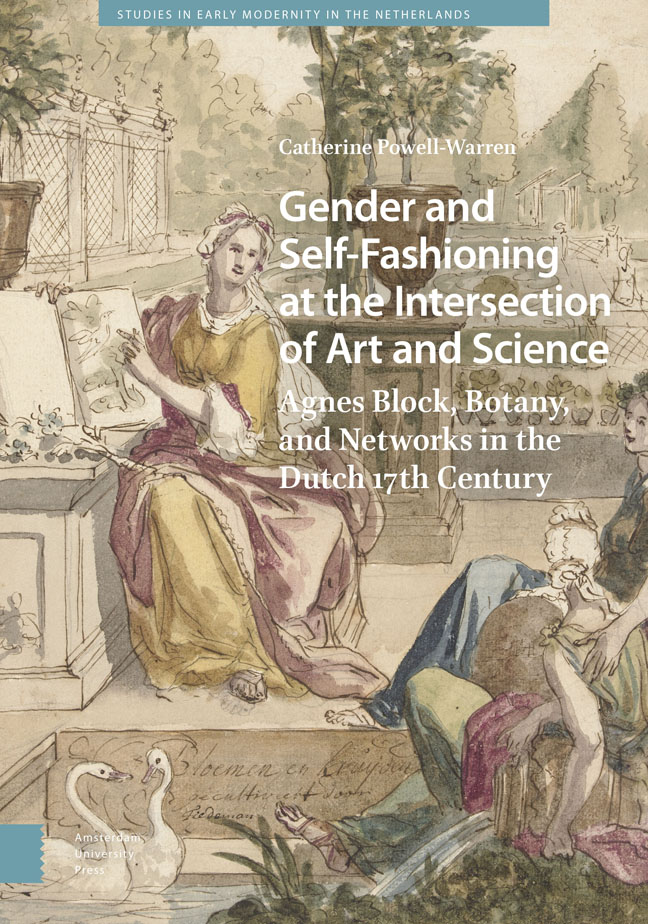 Gender and Self-Fashioning at the Intersection of Art and Science
Gender and Self-Fashioning at the Intersection of Art and Science Book contents
- Frontmatter
- Dedication
- Contents
- List of Figures and Photographic Credits
- Acknowledgements
- Introduction
- 1 Vijverhof and the Pursuit of Nature
- 2 Vijverhof in Context
- 3 Vijverhof as a Space of Knowledge Creation, Exchange, and Relationships
- 4 Becoming Flora Batava
- 5 Flora Batava in Context
- 6 The Bloemenboek and Block’s Watercolours: Self-Fashioning at the Intersection of Art and Science
- 7 The Bloemenboek as a Meeting Place and Visual Manifestation of Agnes Block’s Artistic Network
- Conclusion
- Appendix A
- Bibliography
- Index
3 - Vijverhof as a Space of Knowledge Creation, Exchange, and Relationships
Published online by Cambridge University Press: 20 February 2024
- Frontmatter
- Dedication
- Contents
- List of Figures and Photographic Credits
- Acknowledgements
- Introduction
- 1 Vijverhof and the Pursuit of Nature
- 2 Vijverhof in Context
- 3 Vijverhof as a Space of Knowledge Creation, Exchange, and Relationships
- 4 Becoming Flora Batava
- 5 Flora Batava in Context
- 6 The Bloemenboek and Block’s Watercolours: Self-Fashioning at the Intersection of Art and Science
- 7 The Bloemenboek as a Meeting Place and Visual Manifestation of Agnes Block’s Artistic Network
- Conclusion
- Appendix A
- Bibliography
- Index
Summary
Abstract: This chapter concerns the public sphere of early modern botany and women’s place in it. The development of natural history was collaborative and depended on networks of individuals who exchanged specimens, knowledge, theories, and experiments in a public sphere. Increased institutionalization during the second half of the seventeenth century resulted in the marginalization of women, who were largely excluded from university and professional academies. As demonstrated by Agnes Block’s inclusion in the botanical treatises authored by the men in her network and Maria Sibylla Merian’s publications on flora and entomology, however, women were not altogether excluded from the public sphere of botany. Nevertheless, even when they did succeed, their achievements were framed in gendered terms.
Keywords: garden as laboratory; gender and natural history; early modern women and science; botany as collaboration; institutionalization of natural history; public sphere of botany
As noted in chapter 2, the period of time spanning Block’s adult life was a time of curiosity and fascination about nature, and empiricism—in the Republic, and throughout Europe. Whereas the earlier chapters established Vijverhof’s centrality in Block’s self-fashioning and self-representation as Flora Batava and its place in Dutch culture, this chapter shows that Vijverhof was also a site of knowledge creation, exchange, and community. The estate was an intermediary in Block’s most important relationships and it served as a platform for her extensive network of experts and amateurs. These networks, in turn, were essential to her achievements as an amateur botanist, and in her self-fashioning as Flora Batava.
This chapter sets out the collaborative nature of early modern botany and examines Block’s participation in that enterprise in that context, a participation that was complicated and hindered by her gender. It was by establishing productive relationships with individuals who did have access to resources and institutions (i.e., men) that Block was able to claim her place as an influential and productive member of a “garden circuit” that was arguably one the seventeenth century’s most important organs of the production of botanical knowledge.
Early Modern Botany: A Collaborative Enterprise
The development of botanical knowledge during the early modern period was a collaborative enterprise that emerged through public debate and exchange. As Brian Ogilvie noted, “it could be the product only of a community.”
- Type
- Chapter
- Information
- Gender and Self-Fashioning at the Intersection of Art and ScienceAgnes Block, Botany, and Networks in the Dutch 17th Century, pp. 91 - 126Publisher: Amsterdam University PressPrint publication year: 2023
